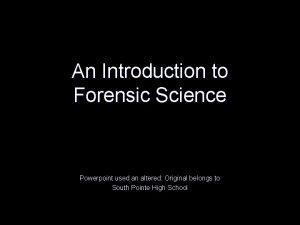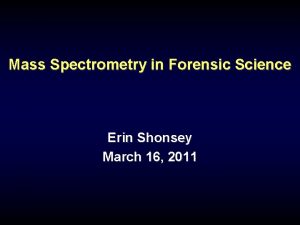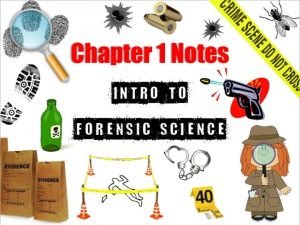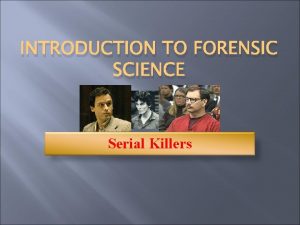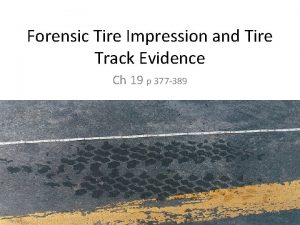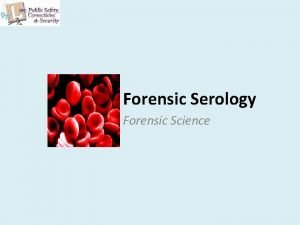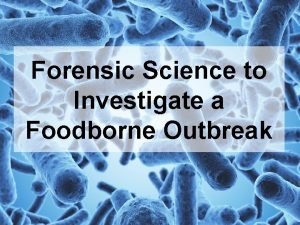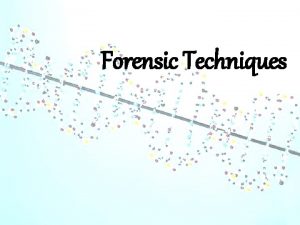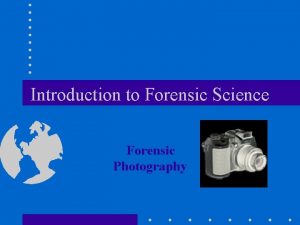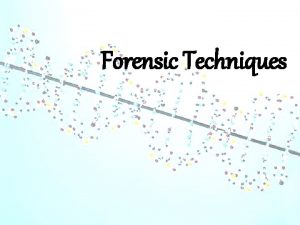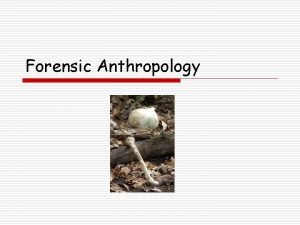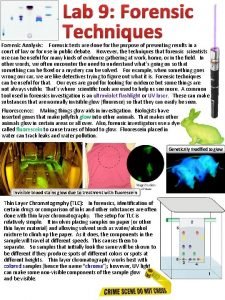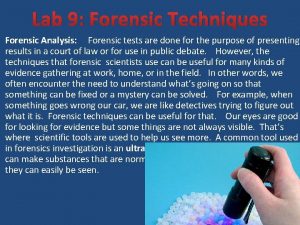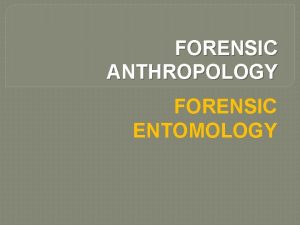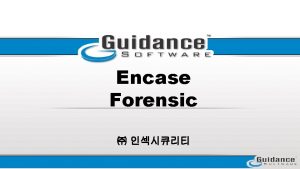The History of Forensic Science The history of














- Slides: 14

The History of Forensic Science

The history of forensic science stretches back as early as the 7 th century, when the Chinese used fingerprints to identify documents and clay sculptures

Sir Arthur Conan Doyle • Sherlock Holmes first applied the principles of serology, fingerprinting, firearm identification, and document examination long beforensic science was recognized as a valid tool for investigators.

Mathieu Orfila 1787 -1853 • Father of Toxicology • Greatly improved tests used to detect poisons…especially arsenic • Treatise of Toxicology …Summed up everything known about poisons and offered classifications

Alphonse Bertillon 1853 -1914 • Bertillon was the inventor of the first scientific method of identifying criminals. • He devised a system of identification of criminals which relies on 11 bodily measurements and the color of the eyes, hair, and skin. • Anthropometric method/Biometrics (Body measurements)

Sir Francis Galton 1822 -1911 • The great man of measurement, of "anything and everything" • Galton was the first to study fingerprints. • He is credited for developing a system of classification for filing fingerprints. • His cousin was Charles Darwin.

Leone Lattes 1887 -1954 • 1915 – Devised a procedure for determining the blood group of a dried bloodstain for criminal investigations • Developed an antibody test for ABO blood groups • He first used the test to resolve a marital dispute.

Dr. Karl Landsteiner 1868 -1943 • 1901 – Discovered that blood can be grouped into four categories • A, B, AB, O

Calvin Goddard (1891 -1955) • Firearms expert • Perfected the comparison microscope for use in bullet comparison

Albert S. Osborn 1858 -1946 • The first American prominent in the field of forgery detection • Established a system for document examinations • Wrote Questioned Documents (1910) which is still used

Hans Gross 1847 -1915 • 1893 - Wrote the first treatise describing the application of various scientific disciplines to the field of criminal investigations • Considered an expert in the field of criminal psychology

Edmond Locard 1877 -1966 • Dr. Edmond Locard was a student of Bertillon (Biometrics) • Educated in medicine and law • “Every contact leaves a trace” • First to suggest 12 matching points as a positive fingerprint identification

J. Edgar Hoover 1895 -1972 • Director of the Federal Bureau of Investigation (FBI) • 1932 - Established the first national forensic lab • FBI is the world’s largest forensic lab.

…yet Sherlock Holmes, a fictitious character, was one of the first true forensic scientists…
 Introduction to forensic science ppt
Introduction to forensic science ppt Who is regarded as the father of forensic science?
Who is regarded as the father of forensic science? Pathologist and anthropologist
Pathologist and anthropologist Who is this
Who is this What is his favorite subject?
What is his favorite subject? Solapith hymen
Solapith hymen Pigment granules in hair
Pigment granules in hair Mass spectrometry in forensic science
Mass spectrometry in forensic science Forensic branches
Forensic branches Ted bundy signature behaviour
Ted bundy signature behaviour Tyre impression forensic science
Tyre impression forensic science Serology forensic science
Serology forensic science Forensic science unit
Forensic science unit Forensic science foodborne outbreak investigation answers
Forensic science foodborne outbreak investigation answers Definition of forensic science
Definition of forensic science
